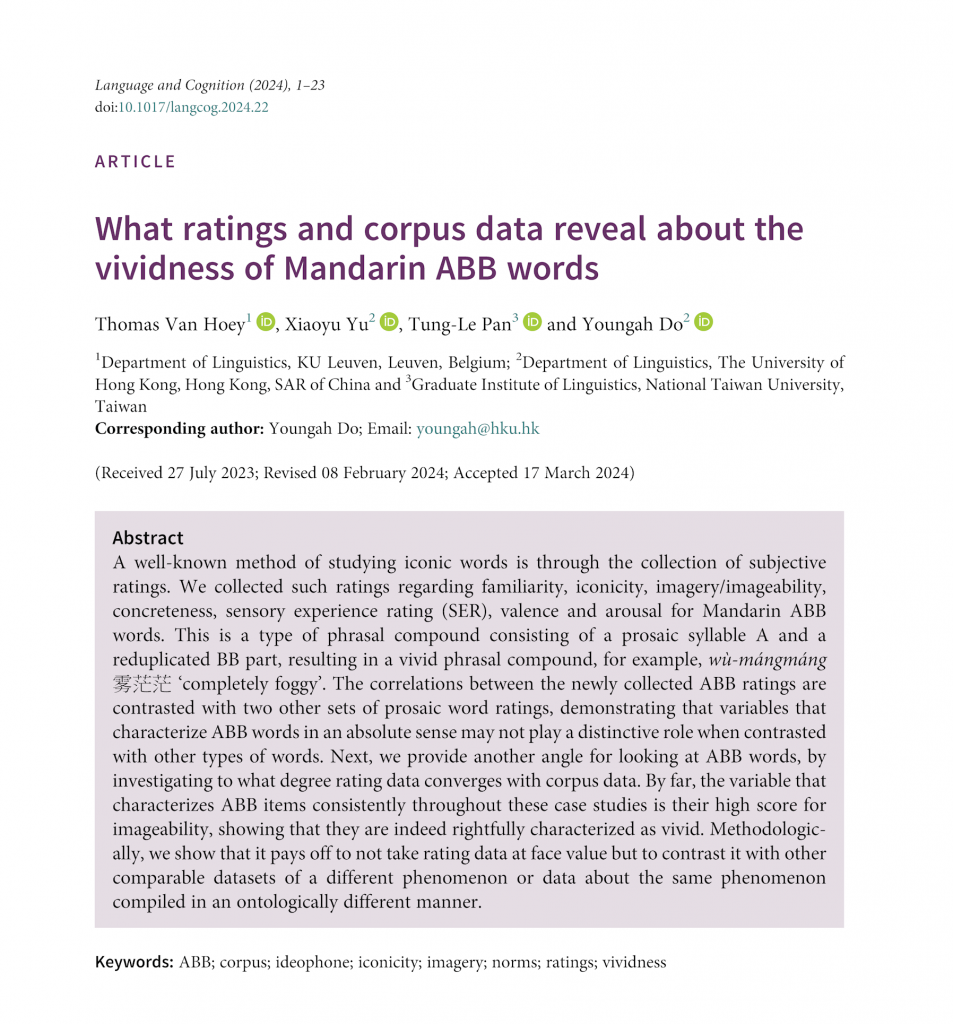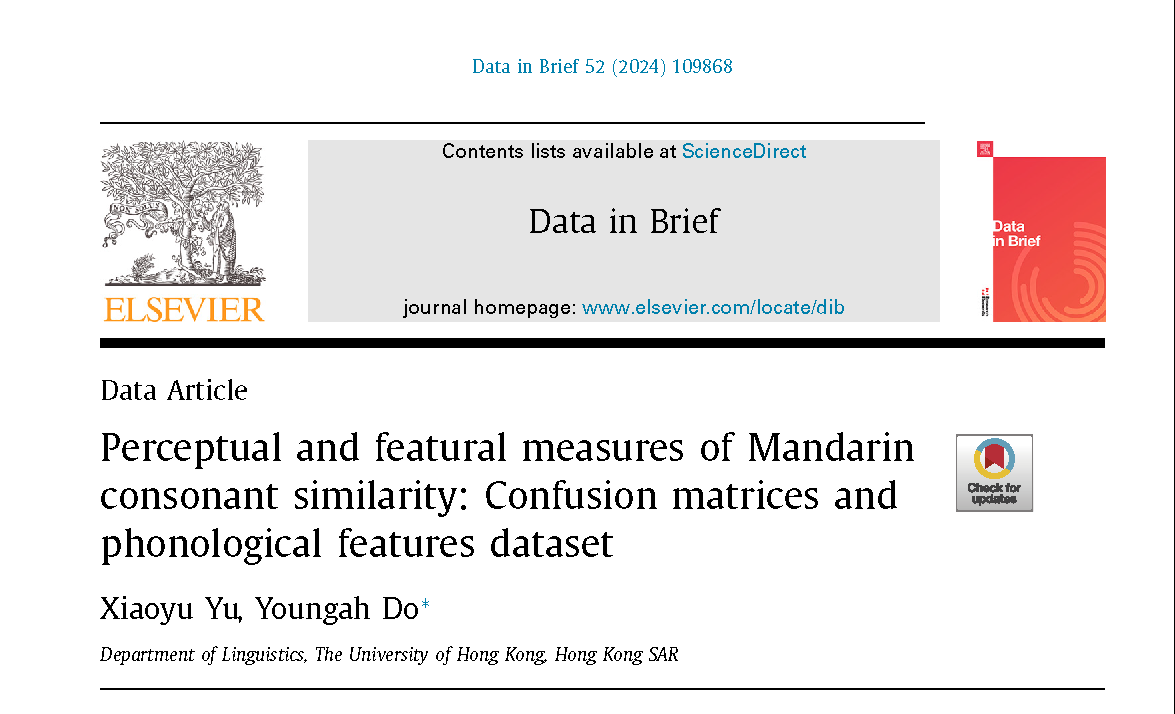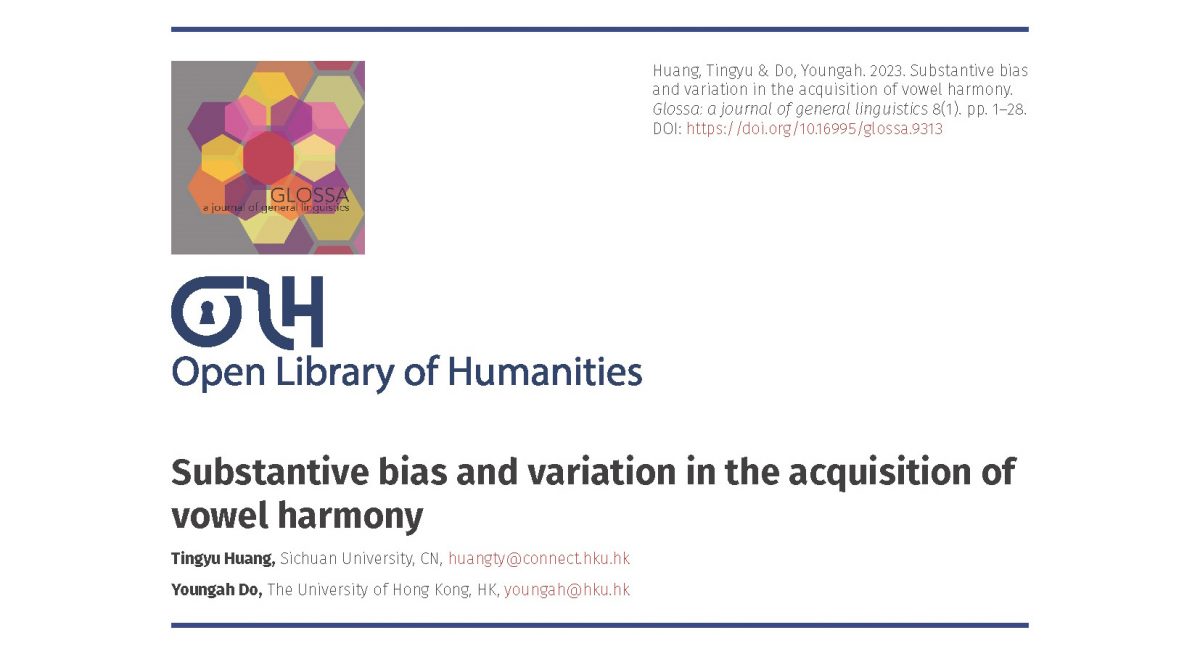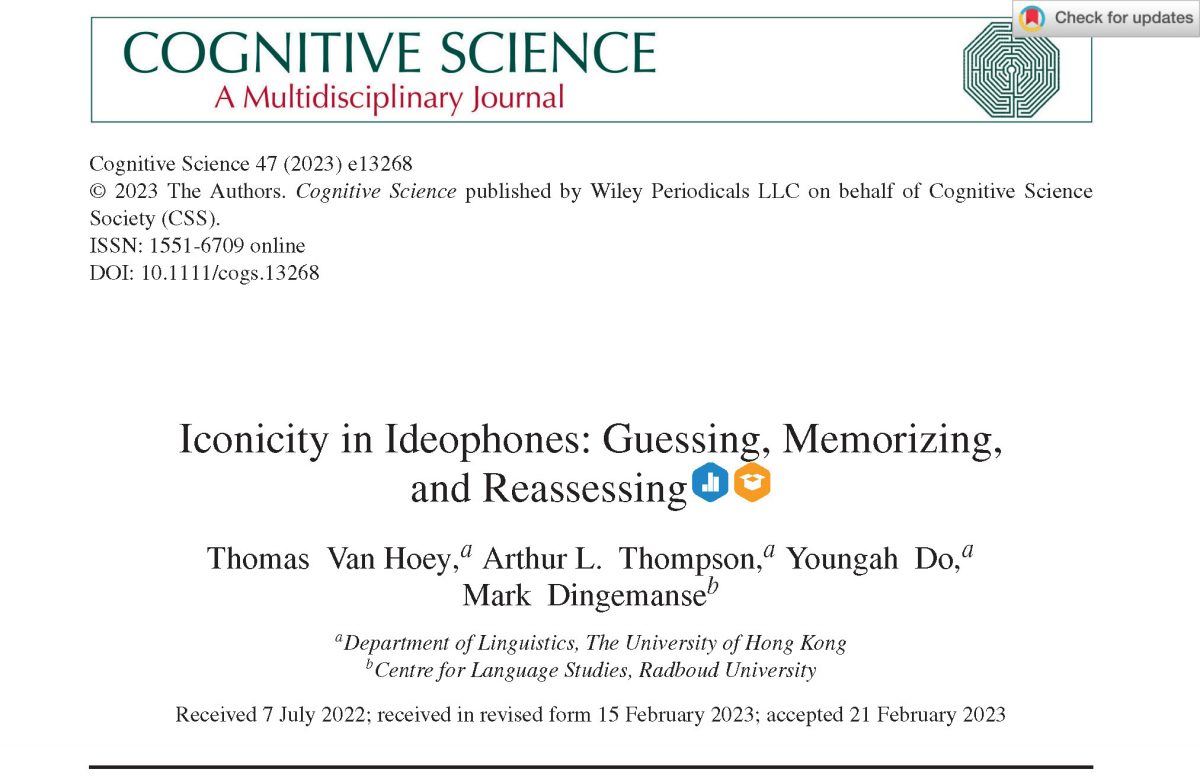The latest LDL research article titled “What ratings and corpus data reveal about the vividness of Mandarin ABB words” has been published in the journal Language and Cognition. This research was conducted by members of our laboratory, Thomas (currently at KU Leuven), Xiaoyu, Youngah, in collaboration with PAN Tung-le from National Taiwan University.

The goal of this study was to understand the vividness of Mandarin ABB words. ABB words are a type of phrasal compound in Mandarin, consisting of a prosaic syllable A and a reduplicated BB part, resulting in a vivid phrasal compound.
The researchers collected subjective ratings regarding familiarity, iconicity, imagery/imageability, concreteness, sensory experience rating (SER), valence, and arousal for Mandarin ABB words. They contrasted these ratings with two other sets of prosaic word ratings to understand the distinctive role of variables that characterize ABB words.
The findings revealed that the variable that characterizes ABB items consistently throughout these case studies is their high score for imageability, showing that they are indeed rightfully characterized as vivid. The study also demonstrated the importance of contrasting rating data with other comparable datasets of a different phenomenon or data about the same phenomenon compiled in an ontologically different manner.
Van Hoey, T., Yu, X., Pan, T.-L., & Do, Y. (2024). What ratings and corpus data reveal about the vividness of Mandarin ABB words. Language and Cognition, 1–23. open_in_newDOI




